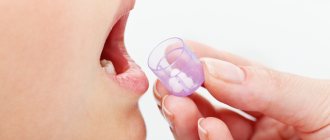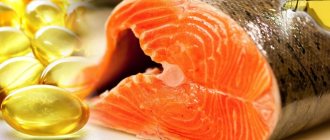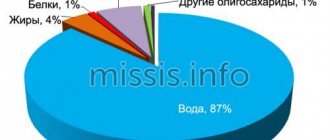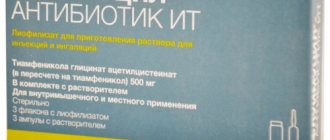The world before antibiotics
From a school course on the history of ancient times, we all once learned about the terribly short life expectancy of people. Men and women who miraculously reached thirty years of age were considered long-livers, but it would be difficult to call them healthy: by this age, the skin was covered with numerous defects, teeth rotted and fell out, and internal organs worked to the point of wear and tear due to a meager diet and hard physical labor.
Infant mortality was at an alarming rate, and the death of women from “puerperal fever” was common. It is enough to look at the biography of famous people of the 16th – 19th centuries to see confirmation of this sad fact: for example, in the family of the great writer and playwright Nikolai Vasilyevich Gogol there were 12 children, including himself: 6 girls and 6 boys. Of these, only 4 sisters survived to adulthood, and the rest of Gogol’s brothers and sisters died either immediately after birth or in childhood from illnesses. And no wonder, because by the time the writer passed away, the inventor of antibiotics had not even been born.
However, at all times, people have tried to find a cure for infectious diseases, without even realizing their infectious nature and the danger of contact with carriers. And what could act as a source of medicine, if not the gifts of nature? From herbs, fruits, seeds, roots and mushrooms, ancient healers tried experimentally to obtain healing potions for a variety of diseases - often without success, but sometimes luck smiled on them. The most effective recipes were passed down from generation to generation, and this is how traditional medicine developed. And everything new is, as we know, a well-forgotten old. Therefore, the true inventor of antibiotics probably lived and healed people many centuries before countless boxes of pills appeared on modern pharmacy counters.
Ancient history and the Middle Ages
It is known that about two and a half thousand years ago, Chinese monasteries used a gruel made from fermented soybean flour to treat purulent wounds and cuts in warriors injured in sword fighting. The meaning of the technique is obvious: the yeast-like microorganisms contained in this improvised “antiseptic” prevented the proliferation of pyogenic bacteria, and thereby prevented blood poisoning.
Representatives of another wisest ancient civilization and the builders of the pyramids, the Egyptians, also had the inventor of antibiotics in their ranks. True, he did not do this for a good purpose - one of the court doctors came up with the idea of tying bandages with moldy bread around the ankles of slaves damaged by shackles. This made it possible to prolong the life of the unfortunate people and force them to work in the quarries longer.
In medieval Europe, a similar method of treating purulent wounds arose: they were treated with cheese whey. The principle of action is the same - yeast against bacteria. Of course, doctors back then did not know either of these two concepts, but this did not stop them from applying bandages soaked in serum to the festering wounds received by warriors on the fields of numerous battles between the kingdoms. The person who first came up with this treatment method can also rightfully be called the inventor of antibiotics.
New and Contemporary times
Just think - only at the beginning of the nineteenth century, when humanity was already storming the oceans and constructing aircraft, people first realized the contagiousness of infections and introduced the term “bacteria” (in 1828 by Christian Ehrenberg). Before this, no doctor had been able to trace a direct connection between contamination of wounds, their suppuration and the death of patients. In the infirmaries, people were given bandages from any available material and did not change them, not seeing any need for it.
And in 1867, the British surgeon D. Lister put an end to this and even found a remedy to combat purulent infections and postoperative complications. He proposed using carbolic acid to disinfect wound surfaces, and for a long time this substance was the only hope of salvation for “severe” surgical patients. Lister is, if not the inventor of antibiotics, then certainly the discoverer of sanitation and antiseptics.
"The strongest survives"
Charles Darwin
Obviously, the simpler the mechanism is, the easier it is to repair it “on the knee” and improve its technical characteristics without spending too much time. Bacteria are very simple devices. When you have only one cell, there is no need to continually disassemble the nucleus and unpack the chromosomes, the genome is not overloaded with many regulatory elements, and all genetic material is used sparingly to maintain only the most necessary life functions, then it is much easier to adapt it to changing conditions. The life of the bacterium is short - 20-30 minutes. But if nothing interferes with it, it usually ends in division. In other words, every half hour there will be two instead of one cell, and by the end of the day about seventy generations will have changed. Therefore, from an evolutionary point of view, time flows faster for bacteria than for us, which means natural selection also works faster. No matter how powerful an antibiotic is, there is always a chance that among its billion victims there will be at least one who will survive thanks to an accidentally acquired mutation. And having managed to survive, it will receive an exclusive opportunity to reproduce and pass on this ability to survive to daughter cells, and those, in turn, to their own. The descendants of surviving bacteria will sooner or later form a population that is completely immune to the old antibiotic - exactly according to Darwin [13].
Figure 3. Medicines form the basis of modern medicine
NutritionFacts.org
Higher organisms that are under constant pressure adapt in a similar way. Crop-damaging insects develop resistance to pesticides, but it takes them much longer. Bacteria, not only reproduce quickly, but also know how to “neighborly” exchange genes directly with each other (this is called “horizontal gene transfer”). All this only further accelerates their adaptation to new conditions.
The dispute in which a scientific discovery was born
The history of the invention of an antibiotic from mold fungi began in the 60s of the nineteenth century in Russia. Two scientists, Alexey Polotebnov and Vyacheslav Manassein, argued about the nature of the most ancient nuisance - mold, which is very difficult to fight. Polotebnov believed that mold acts as a kind of progenitor of all microbes living on Earth. Manassein categorically disagreed with this point of view - he believed that mold has a unique biological structure and is fundamentally different from other microorganisms.
To support his opinion with facts, Manassein began to study green mold and soon discovered that there were no colonies of bacteria in the immediate vicinity of its strains. From this, the scientist concluded that mold prevents microbes from multiplying and feeding. He shared the results of his observations with Polotebnov, who admitted he was wrong and set about inventing an antiseptic emulsion based on mold. With the resulting remedy, Manassein's former opponent was able to successfully treat skin infections and non-healing wounds.
The result of the joint research work of the two scientists was a scientific article entitled “The Pathological Significance of Mold,” which was published in 1872. But, unfortunately, the international medical community of that time did not pay due attention to the work of Russian specialists. And they, in turn, did not transfer their research to the development of a drug for internal use, and limited themselves to a local antiseptic. If not for these circumstances, who knows - perhaps a Russian scientist would have become the inventor of antibiotics.
Competition "bio/mol/text"-2014
This article was submitted to the competition of popular scientific works “bio/mol/text”-2014 in the “Best Review” category.
The main sponsor of the competition is the visionary. The competition was supported by RVC OJSC.
The sponsor of the Bioinformatics nomination is the Institute of Bioinformatics. The audience award was sponsored by Helicon. The Foundation for Support of Advanced Biotechnologies also presents its prize.
Through natural selection, we have developed the ability to resist; we do not yield to any bacteria without a stubborn struggle. Herbert Wells. War of the Worlds
The first antibiotics and antiseptics
By the end of the nineteenth century, the problem of insufficient effectiveness of antiseptics became obvious. The solutions available to doctors at that time were unsuitable for treating infections of internal organs, and when treating wounds they did not penetrate deep enough into the infected tissues. In addition, the effect of antiseptics was weakened by the patient’s biological fluids and was accompanied by numerous side effects.
The time has come for global changes, and scientists throughout the civilized world have begun active research in the field of infectious medicine. There were 50 years left before the official discovery of the first antibiotic...
In what century were antibiotics invented?
The very phenomenon of antibiosis, that is, the ability of some living microorganisms to destroy others or deprive them of the opportunity to reproduce, was discovered in the 80s of the nineteenth century. The famous French biochemist and microbiologist Louis Pasteur, the author of the method of pasteurization of food products, in one of his scientific works published in 1887, described the antagonism of soil bacteria and Koch bacilli - the causative agents of tuberculosis.
The next important step in the right direction was the study by the famous Russian scientist Ivan Mechnikov of the effect of acidophilus bacteria contained in fermented milk products on the human digestive tract. Mechnikov argued that fermented baked milk, kefir, yogurt and other similar drinks have a beneficial effect on health and can even fight intestinal disorders. This was later confirmed by the outstanding Russian pediatrician of German-French origin, Eduard Hartier, who tried to treat digestive disorders in children with fermented milk products and described the positive results of therapy.
Military field doctor Ernest Duchesne from the French city of Lyon came even closer to the solution. He saw that Arabian grooms used the mold to treat back injuries suffered by horses from the saddle during long journeys. Moreover, the mold was collected directly from this very saddle. Duchesne took a sample of it, named it Penicillium glaucum, used it against typhoid fever in guinea pigs, and also confirmed the destructive effect of mold on the bacteria Escherichia coli (Escherichia coli).
A young doctor (he was only 23 years old) wrote a dissertation based on his research and sent the document to the Pasteur Institute in Paris, but they did not pay attention to the most important scientific work and did not even notify the author of receipt and reading - apparently, they did not take Ernest Duchenne seriously from - for his young age and little experience. But it was this Frenchman who came closest to the fateful discovery and could rightfully bear the title “inventor of antibiotics.” But fame came to him after his death, in 1949, 4 years after other people were awarded the Nobel Prize for this.
Chronology of the invention of antibiotics:
- 1896 - Mycophenolic acid, which destroys anthrax, is isolated from the mold Penicillium brevicompactum. The author of the study is B. Gozio;
- 1899 - a local antiseptic based on pyocenase, a substance obtained from the bacteria Pseudomonas pyocyanea, was invented. Authors: R. Emmerich and O. Lowe;
- 1928 - A. Fleming discovered the antibiotic penicillin, but was unable to develop a stable drug suitable for mass production;
- 1935 - D. Gerhard published an article on the antibacterial effect of prontosil in the German scientific journal Deutsche Medizinische Wochenschrift, and in 1939 received the Nobel Prize in Physiology or Medicine for this research;
- 1937 - M. Welsh discovered actinomycin, the first antibiotic of the streptomycin series;
- 1939 - N.A. Krasilnikov and A.I. Korenyako invented the antibiotic mycetin, R. Dubos discovered tyrothricin, and the production of streptocide began at the pharmaceutical plant;
- 1940 - E.B. Chain and G. Flory managed to isolate penicillin in crystalline form and created a stable extract;
- 1942 - Z. Vaksman first introduced the term “antibiotic” into medical use.
So, the era of penicillin began only in 1940, when the American followers of the works of A. Fleming managed to obtain a stable chemical compound with an antibacterial effect from mold. But first things first.
Inventor of penicillin Alexander Fleming
This name is known to any of us from school, since it is written in “golden letters” in all biology textbooks. We should be grateful to this amazing person - talented, purposeful, persistent and, at the same time, very simple and modest. Alexander Fleming deserves recognition not only as the inventor of antibiotics, but also as a doctor who is completely devoted to science and understands the true purpose of his profession: mercy and selfless help to people.
The boy who changed the course of history was born on August 6, 1881 into a large Scottish family on the Lochwild farm. Until the age of twelve, Alexander studied at a school in Darvel, then for two years at the Kilmarnock Academy, and then moved to London closer to his older brothers, who lived and worked in the capital of Great Britain. There, the future inventor of antibiotics worked as a clerk and studied at the Royal Polytechnic Institute. He was inspired to turn his attention to medicine by the example of his brother, Thomas, who received a diploma as an ophthalmologist.
Alexander entered medical school at St. Mary's Hospital, and in 1901 managed to receive a scholarship there, leave his office job and concentrate entirely on his scientific development. Fleming began with surgery and pathological anatomy, but soon came to the conclusion that it would be much more interesting for him to study the nature of diseases and prevent their development than to observe the consequences on the operating table. Alec (that was his name in the family) had a great passion for laboratories, microscopes and reagents, so he retrained from a surgeon to a microbiologist.
Professor Almort Wright, who arrived at St. Mary's Hospital in 1902, had a huge influence on the development of Alexander Fleming as the inventor of antibiotics and the savior of millions of human lives. Wright at that time was already an eminent scientist - he developed a vaccine against typhoid fever. The professor carried out his research on the basis of the hospital and in 1906 created a group of young researchers, which included Alexander Fleming, who had just completed his course of study and received his doctorate.
Soon a big disaster came - the First World War. Alec served in Her Majesty's Royal Medical Army with the rank of captain and along the way studied the effects of shrapnel wounds from explosives. At the end of hostilities, the young specialist focused on finding a medicine that could prevent suppuration and alleviate the plight of the wounded soldiers. The inventor of antibiotics, Alexander Fleming, spent his entire life working in a research laboratory at St. Mary's Hospital, where he was elected professor and where he made his major discovery.
The scientist’s personal life was quite happy - on December 23, 1915, he married a young colleague Sarah (whom he affectionately called “Sarin”), and soon they had a son, Robert, who later also became a doctor. Saryn said about her husband: “Alec is a great man, it’s just that no one knows about it yet.” She died in 1949, and 4 years later, the widowed Fleming married another colleague of his, Greek by nationality, Amalia Kotsouri-Vourekas. But the couple’s happiness did not last long - on March 11, 1955, Sir Alexander Fleming, the inventor of antibiotics, died in his wife’s arms from a heart attack.
This is interesting: During his long and fruitful life (74 years), Fleming had a distinguished Masonic career, being awarded a knighthood, 26 medals, 18 international prizes (including a Nobel), 25 scientific degrees, 13 government awards and honorary membership in 89 academies of sciences. to the whole world.
On the grave of the famous scientist there is an inscription of gratitude from all mankind: “Here lies Alexander Fleming, the inventor of penicillin.” His personality is most clearly characterized by the fact that Fleming flatly refused to patent his invention. He believed that he had no right to profit from the sale of a drug on which people’s lives literally depended.
The scientist’s modesty is also evidenced by the fact that he was skeptical about his fame, calling it simply the “Fleming myth” and denied the feats attributed to him: for example, there were rumors that with the help of penicillin, Sir Alexander saved British Prime Minister Winston Churchill during World War II war. When Churchill fell ill in Carthage in 1943, he was cured by Lord Moran, who used sulfonamides, as Fleming pointed out in response to questions from journalists.
The unusual story of the discovery of penicillin
Many great scientific discoveries are made by pure chance - circumstances are favorable, and there is a person nearby who sees an interesting fact and draws conclusions from it. The inventor of antibiotics, Alexander Fleming, like all geniuses, was obsessed with what he loved, impatient, and also incredibly absent-minded. His office was in creative disarray, and thoroughly washing retorts and slides seemed to him a dull task.
Let's follow the chronology of happy accidents:
- Fleming made his first “accidental” discovery in 1922, when he caught a cold, but did not wear a gauze bandage while working with bacterial cultures. He simply sneezed into a Petri dish, and after a while he was surprised to discover that the pathogenic bacteria died under the influence of his saliva. This is how humanity learned about lysozyme, a natural antibacterial component of our saliva;
- Fleming's second and most remarkable "accidental" discovery earned him the Nobel Prize. In 1928, the scientist cultured staphylococcus in an agar-agar nutrient medium and went on vacation with his family for the whole of August. During this time, in one of the bacterial colonies, the mold Penicillium notatum, introduced there by negligence, multiplied. Returning from vacation, Fleming was surprised to find that the mold had fenced off the staphylococci with the help of a clear liquid, in the drops of which not a single bacteria could survive.
Then the future inventor of antibiotics decided to deliberately grow mold in a large flask with water and observe its behavior. From gray-green, the molds eventually turned black, and the water in which they lived turned yellow. Fleming came to the conclusion that mold releases certain substances during its life, and tested them in action. It turned out that the resulting liquid, even in a concentration of 1:20 with water, completely destroys all bacteria!
Fleming named his invention penicillin and began to study its properties more carefully. He was able to experimentally establish that the liquid kills only microflora, but does not damage body tissue, which means it can be used to treat infections in humans. All that remained was to somehow absorb penicillin from the solution and create a stable chemical compound that could be put into industrial production. But this task was beyond the capabilities of the inventor of antibiotics, because he was a microbiologist, not a chemist.
The path to mass production of the first antibiotic
For 10 long years, Fleming struggled to develop the drug, but all experiments turned out to be unsuccessful - penicillin was destroyed in any foreign environment. In 1939, two English scientists who settled overseas in the United States became interested in his research. These were Professor Howard Walter Flory and his colleague, biochemist Ernst Boris Cheney (Russian origin). They correctly assessed the prospects of penicillin and moved to Oxford to use the university laboratory to try to find a stable chemical formula for the drug and bring the dream of antibiotic inventor Alexander Fleming to life.
It took two years of painstaking work to isolate the pure substance and put it in the form of a crystalline salt. When the drug was ready for practical use, Flory and Chain invited Fleming himself to Oxford, and together the scientists began testing. During the year, it was possible to confirm the effectiveness of penicillin treatment for diseases such as sepsis, gangrene, pneumonia, osteomyelitis, gonorrhea, and syphilis.
This is interesting: The correct answer to the question in what year the antibiotic penicillin was invented is 1941. But the official year of discovery of penicillin as a chemical substance is 1928, when it was discovered and described by Alexander Fleming.
The main field of testing for the antibiotic was the Second World War. Due to fierce fighting, it was impossible to establish industrial production of penicillin on the British Peninsula, so the first ampoules with life-saving powder rolled off the production line in the United States in 1943. The American government immediately ordered 120 million units of penicillin for domestic needs. From America the drug was supplied to Europe, and this saved millions of human lives. It is difficult to even imagine how much the number of victims of this war would have increased if it had not been for the inventor of antibiotics, Alexander Fleming, and his followers, Chain and Florey. Already in the post-war years, it was found that penicillin even cures endocarditis, which until then was a fatal disease in 100% of cases.
This is interesting: In 1945, Alexander Fleming, Ernst Chain and Howard Florey were awarded the Nobel Prize in Medicine or Physiology for the invention of penicillin, the world's first broad-spectrum antibiotic for internal use.
Penicillin in the USSR
Speaking about the role of this antibiotic in the history of the Second World War, one cannot fail to mention Professor Zinaida Vissarionovna Ermolyeva, who in 1942 collected mold from the walls of a Moscow bomb shelter and managed to isolate penicillin from it. Already in 1944, the drug was tested and put into industrial production. It was named “crustosin” because the raw material for the antibiotic was the mold Penicillium crustosum. During the Great Patriotic War, Soviet penicillin showed its best side and became a real salvation for millions of wounded soldiers. It is noteworthy that Crustosin was more concentrated and effective than the drug invented in the UK.
The significance of the invention of antibiotics
At first glance, the value of this discovery is so obvious that all that remains is to erect a monument to the inventor of antibiotics and enjoy the fruits of his labors. In the middle of the last century, this was precisely the opinion that prevailed in scientific circles: the medical community was overwhelmed by euphoria from the awareness of the opportunities that antibiotics provide to humanity. In addition to penicillin, Waxman soon invented streptomycin, which is active against mycobacterium tuberculosis, and it seemed that now there were no obstacles to the complete eradication of epidemics that devastated entire cities.
However, even the inventor of antibiotics himself, Alexander Fleming, foresaw the double consequences of using antibacterial drugs and warned about the possible danger. Being a brilliant microbiologist and understanding the principles of the evolution of living organisms, Fleming realized the likelihood of bacteria gradually adapting to the weapons with which people would try to destroy them. And he did not believe in the complete and unconditional victory of medicine over infections. Unfortunately, the inventor of the first antibiotic was right again...
Positive aspect
The era of antibiotics has changed the world beyond recognition:
- Average life expectancy in some countries has doubled or tripled;
- Infant mortality decreased by more than 6 times, and maternal mortality by 8 times;
- The course of treatment for most bacterial infections now takes no more than 21 days;
- None of the previously deadly infectious diseases are now even 50% lethal;
- Over the past half century, only a few cases of pandemics (large-scale epidemics) have been reported, with losses amounting to hundreds of people, and not tens of thousands, as before the invention of antibiotics.
But can we say with all this that medicine has defeated infections? Why haven’t they disappeared from the face of the Earth after 80 years of antibiotic use?
Negative aspect
By the time the inventor of antibiotics, Fleming, gave humanity hope in the form of penicillin, science already knew a considerable number of pathogenic and opportunistic microorganisms. Since it turned out that some of them are resistant to penicillin, scientists began to develop other groups of antibiotics - tetracyclines, cephalosporins, macrolides, aminoglycosides, and so on.
There were two ways: either try to find a remedy against each specific pathogen, or create broad-spectrum drugs to be able to treat common infections without recognition and even cope with diseases of mixed bacterial etiology. Of course, the second path seemed more reasonable to scientists, but it led to an unexpected turn.
Under the influence of antibiotics, bacteria began to mutate - this mechanism is inherent in any form of life by nature. New colonies inherited genetic information from dead “ancestors” and developed defense mechanisms against the bactericidal and bacteriostatic effects of drugs. Treatment of diseases that until recently responded well to antibiotic therapy became ineffective. Scientists invented a new drug, and bacteria - a new weapon. With the widespread and free sale of antibiotics, this process has become a vicious circle, from which science has still not been able to break out. We have created thousands of new species of bacteria with our own hands, and we continue to do so.
The problem of resistance
Gene mutations and acquired resistance to antibiotics, which penicillin inventor Alexander Fleming warned about, are the harsh reality of our day. Moreover, nature is outpacing humans in this “arms race” at an ever-increasing speed.
Here are some examples:
- Tetracycline - appeared in 1950, bacteria resistant to it - in 1959;
- Methicillin - in 1960, resistant bacteria - in 1962;
- Vancomycin - in 1972, resistant bacteria - in 1988;
- Daptomycin - in 2003, bacteria - a year later, in 2004.
How is this possible? The fact is that bacteria multiply very quickly - literally every 20 minutes a new colony appears, which inherits genetic information from previous generations. The more often a patient is treated with the same drug, the better he “acquaints” his pathogenic flora with it, and the higher the likelihood that the bacteria will mutate for reasons of self-defense. And if a person uncontrollably takes antibiotics from different groups, bacteria may grow in his body that are resistant to several, or even all, antibacterial drugs at the same time! This phenomenon is called multidrug resistance and poses a huge threat.
The first such bacteria were discovered back in the 60s of the twentieth century, that is, only 20 years after the invention of antibiotics and the beginning of their mass use. Further - worse. For example, in 1974 in the United States, about 2% of cases of staphylococcal infections were resistant to methicillin, in 1995 - 22%, in 2007 - 63%. And now MRSA (multidrug-resistant staphylococcus) claims 19 thousand lives every year in America alone.
The mutation of bacteria, the likelihood of which the inventor of antibiotics Fleming himself warned about, has now become a catastrophe for three reasons:
- People take antibiotics unnecessarily and uncontrollably. Medicine and pharmacy are completely commercialized, doctors prescribe antibacterial drugs, even knowing that they will not help, plus pharmacists dispense such pills without a prescription to all those who like to self-medicate;
- Almost no new antibiotics are produced. The invention, testing, certification and commercial launch of such drugs costs several million dollars. It is much easier and more profitable to take an active substance that already has an international patented name, release it under a different brand, advertise it and start raking in money;
- Antibiotics enter our body with food. Suffice it to say that about 80% of the market for antibacterial drugs in the United States is focused not on medicine, but on the food industry - with their help, food producers avoid losses from livestock diseases and the activity of pests that attack fruit and cereal crops. In Russia, the situation at the local level is much better, but one cannot ignore the flow of cheap imports.
The saddest thing is that humanity itself is to blame for the current situation. Correcting it, or at least delaying its dangerous consequences, requires international efforts, global awareness and determination. But in reality, people are guided only by commercial considerations.
How does it all work?
The mechanisms of action of modern antibiotics on the target cell can be very different [7]. Representatives of the beta-lactam group (which includes penicillin) inhibit the synthesis of peptidoglycan, which forms the basis of the bacterial cell wall. Without it, osmotic pressure inside the cell destroys the plasma membrane, and the cell bursts like a balloon. Unfortunately, such antibiotics only suppress the growth of new peptidoglycan chains, but do not destroy already formed ones. Therefore, they can stop cell division and their active growth, but nothing can be done with bacteria that are in the dormant stage, or with the so-called L-forms, which have no cell wall at all, but have retained the ability to develop. Sulfonamides prefer to attack the intracellular metabolism of the victim, for example, blocking the chemical reactions necessary for the synthesis of folic acid. The bacterium does not know how to absorb vitamins from the outside, so the inability to synthesize them on its own is fatal for it. Some antibiotics (aminocoumarins and fluoroquinol compounds) disable bacterial DNA gyrase, an enzyme that unwinds the supercoiled chromosome for its replication. Thus, the cell is deprived of the ability to copy its DNA and reproduce. Another way to kill a bacterium is to disrupt the synthesis of its proteins. Tetracycline antibiotics work according to this scheme: they attach to the small subunit of the bacterial ribosome, an organelle responsible for building proteins on an RNA matrix [8].
This list is not complete; there are other groups of antibiotics. One way or another, their target is almost always a protein, be it a bacterial enzyme, metabolite, cytoskeletal element, proton pump, or something else [9]. Even to simply get inside a cell, an antibiotic must first pass through its cell wall and membrane through channels that also consist of proteins (porins) [10], [11]. And there are two important points here. Firstly, there are a monstrously large number of proteins, and they are very diverse, hence the variety of antibiotics. Each of them affects “its own” protein - and is harmless to all microorganisms that do not have such a protein. But what’s much worse is that proteins are easier and faster than other compounds (carbohydrates, phospholipids, etc.) and are subject to adaptive changes. This is precisely what lies at the heart of a large-scale problem, which has not yet manifested itself in full force, but is already looming on the horizon and in the near future threatens to turn into a serious disaster. We are talking about the ability of bacteria to quickly—in a matter of months—develop resistance to any antibiotic [12].
Figure 2. Interaction between methicillin-resistant Staphylococcus aureus (yellow) and human leukocyte. The MRSA252 strain is one of the most common causes of hospital-acquired infections in the US and UK.
National Institute of Allergy and Infectious Diseases








